TECHNICIAN

BRICK BY BRICK
THE FUTURE OF CENTRAL CAMPUS






with the NC
21 - Feb. 26
by Kat Caughron, a







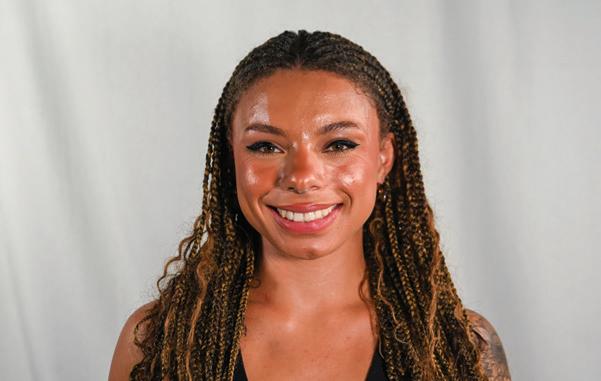
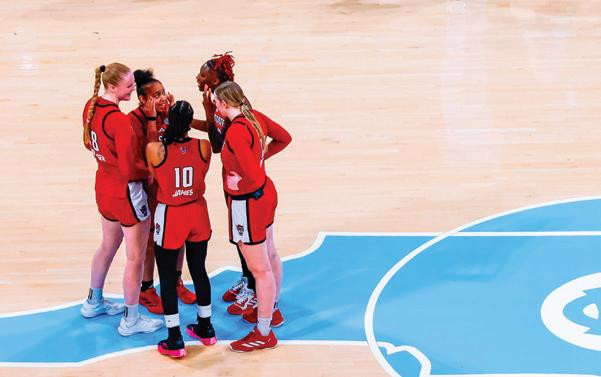
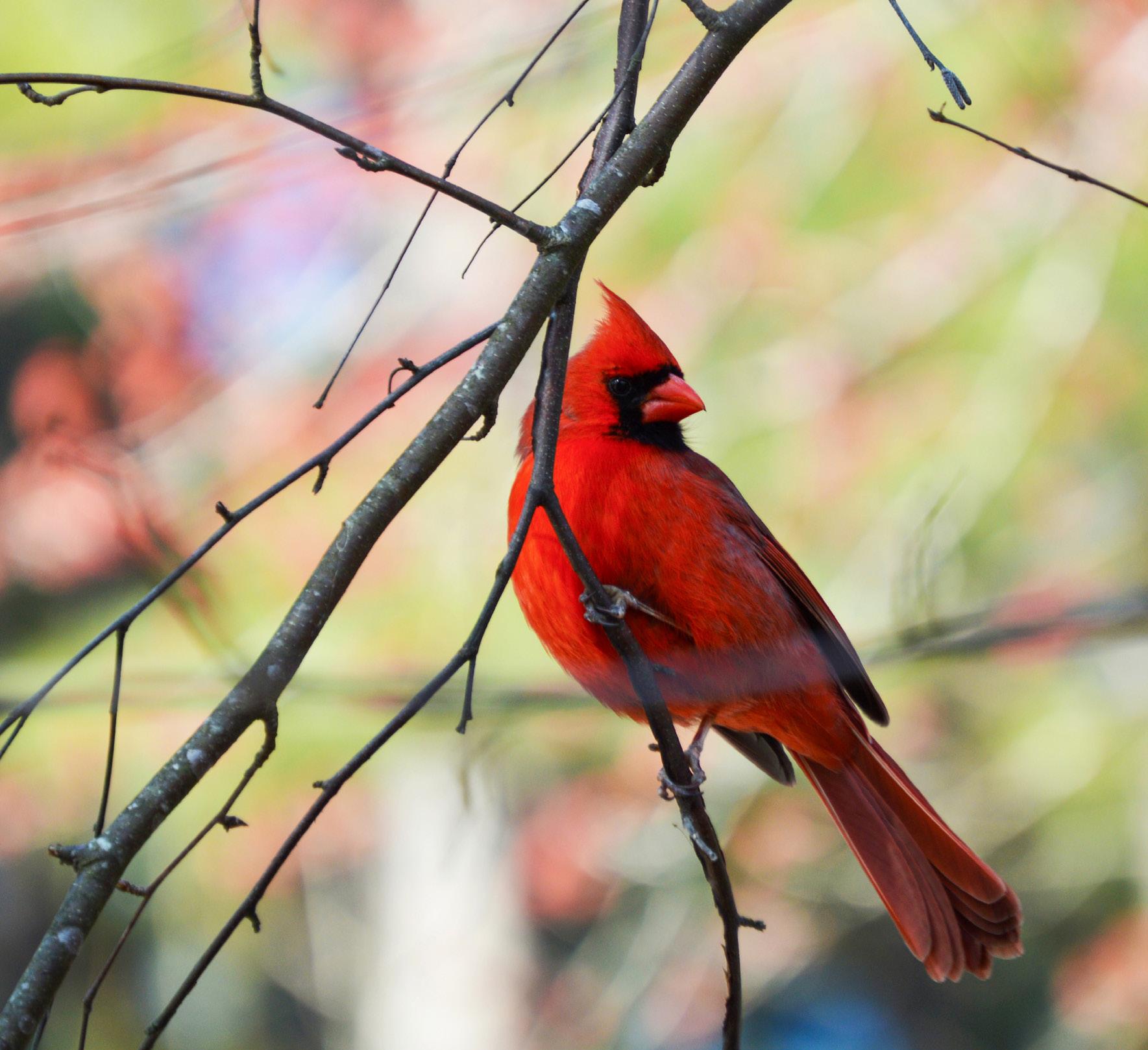
Central campus could eventually see Fountain Dining Hall as well as Lee, Bragaw and Sullivan residence halls demolished to make way for new housing and dining facilities beginning in 2030, according to the early stages of the University Housing plan.
The Cates West Development, currently in the planning phase, could eventually house a 1,500-seat dining facility as well as 3,000 student beds in both a traditional and semi-suite dormitory style. The project will also include social spaces and the rerouting of Dan Allen Drive.
While initially included in NC State’s Physical Master Plan, the development is currently not planned to include a new softball field despite recent discourse.
Donna McGalliard, Associate Vice Chancellor and Associate Dean of Student Life and Advocacy, emphasized the necessity of constructing new buildings to address capacity concerns.
“Not only is it about taking down buildings that don’t meet modern student or resident needs, but it’s also about expanding the number of beds we have,” McGalliard said. “When I first arrived five and a half years ago, we had a waitlist of about 850. The last two years running, we’ve had waitlists of over 2,000.”
Cates West will also allow first-year students to be housed together, freeing up space for students in their second year and later, as well as faculty and staff living in University housing.
“From a cohort perspective, [freshmen] go through very similar things and it’s nice being able to do that in community together,” McGalliard said.
To avoid losing current housing stock, the project will be phased, with residence halls built and then demolished individually. The new dining facility will also be constructed before the demolition of Fountain Dining Hall.

McGalliard said the project is also necessary to address operational needs and modernize buildings, as well as to “right-size” common spaces and facilities, including laundry rooms and package delivery.
Energy efficiency and sustainability will also be a focus of the project, which will aim for at least LEED silver certification — a certification granted by the Green Building Certification Institute based on factors such as energy and water conservation, use of sustainable materials and preserving the environment of the project site.
The plan is still in the early stages of development, currently in the advanced authority phase, accepting bid packages from different types of services such as landscaping and electrical. Final decisions on where buildings will be constructed and the specifics of the project have not yet been determined.
The new housing facilities will not cost students a premium over other facilities.
“What’s typical in a lot of housing organiza-
NC State’s weekly log of major incidents across campus. ARREST
Public Safety Center
Feb. 17, 2025 at 5:11 a.m.
A subject was arrested on outstanding warrants.
WEAPON ON EDUCATIONAL PROPERTY
tions is that there’s a premium on new construction,” McGalliard said. “That is not the model for NC State.”
In an email statement to Technician, Shawn Hoch, Senior Director of Dining and Hospitality Services, emphasized the additional capacity at the 1,500-seat dining facility, an upgrade from Fountain Dining Hall’s current 850 seats. Additionally, the new dining hall is set to have a dedicated kitchen for students with major food allergies and a “food theatre,” in which food is made in front of visitors.
Tom Skolnicki, the University’s landscape architect, said the growth of the freshman class and the improvement of the student experience is a main focus of the project.
Part of the physical master plan’s stress is the demolition of Lee, Sullivan and Bragaw Halls to build new housing for incoming and existing students. Along with this demolition, new spaces for students to collaborate, create and connect will be implemented.
“I think students love [Talley Student Union]
Ferndell Lot Feb. 14, 2025 at 7:09 p.m. ARREST
A non-affiliated individual possessed a weapon in a parked vehicle.
Burlington Labs Feb. 14, 2025 at 2:02 a.m.
A student was arrested for DWI, driving after consuming alcohol under 21, underage possession of alcohol and possession of fake ID.
so much that you can’t find a seat there most evenings,” Skolnicki said, addressing why these new student spaces are needed.
The Cates West Development aims to enhance living, not just through student experience but also through the overall value of life at NC State.
Skolnicki emphasized the importance of accessibility to promote unity among students when constructing these new facilities, as Lee and Sullivan Halls lack elevator accessibility on the ground floor.
“You know that some architect came up with the idea, which makes no sense to me, to have the elevators stop on the stair landing between floors,” Skolnicki said. “None of those upper floors are accessible to students who need the elevator to get there.”
McGalliard echoed Skolnicki’s accessibility concerns.
“Accessibility always comes up on move-in days,” McGalliard said, “Because students and their families can get a move-in cart just to that elevator landing and then it’s like, ‘Well, now what?’”
The University also plans to limit the users of Dan Allen Drive to essential vehicles only to ensure the safety of students, staff and pedestrians on the streets.
Skolnicki said the main deciding point for this rerouting was to protect students using Dan Allen Drive as a hub for their everyday activities.
“It’s really not an ideal situation after 5 p.m., you know, between nine and five with the gates under the railroad limiting some of that traffic,” Skolnicki said. “It’s just a lot of conflict.”
The first phase of the Cates West Development is projected to begin in January 2030, beginning with the construction of 1,500 beds, followed by the demolition of Lee, Sullivan and Bragaw halls and the construction of new buildings in January 2032, finishing with the third phase focusing on the demolition of the remaining buildings, set to begin in January 2034.
DAMAGE TO PROPERTY
Dan Allen Parking Deck Feb. 13, 2025 at 3:18 p.m.
An employee reported that she had discovered a nail in her tire while getting a tire rotation and believes the nail was maliciously planted in her tire while it was parked at the Dan Allen Parking Deck.
Dae Reed Staff Writer
The Young Democratic Socialists of America at NC State recently launched “Career Killers,” a website to aid students in avoiding companies the organization deems as harmful. These companies are often found at the engineering career fair and a part of a larger “Resist Recruitment” effort from YDSA.
YDSA is a student-run organization that aims to educate and organize around political, social and economic change towards democratic socialism. Criss Berke, a fourthyear studying agroecology and sustainable food systems and a co-chair of YDSA, said the goal of the organization’s efforts is to keep students informed about companies who are recruiting on campus.
“We believe that students should not work for the military-industrial complex and for companies that profit off of violence and war,” Berke said.
Nathaniel Dibble, a third-year studying political science and involvement lead at YDSA, said students looking for jobs often don’t feel like they have a choice but to give into harmful industries. Dibble said this resource is helping put power back into the hands of the working class.
“We have power as that future workforce,” Dibble said. “If we can stop these companies from gaining our labor, the value of our labor, we can hopefully put a dent in the horror that these companies create in the world.”
The organization’s efforts have been ongoing since the 2023 picketing protest at the engineering career fair.
“We’re hoping, just by speaking face to

face with our fellow students, that they can understand why these companies are a problem and understand the power that they hold by withholding their labor from them,” Dibble said.
John Hanlon, a second-year studying computer science and a YDSA officer, said a big part of educating students is presenting alternative options.
“There are other companies that aren’t a part of the military-industrial complex, that aren’t making weapons of war, that aren’t involved in environmental destruction or aren’t involved in the active genocides,” Hanlon said.
Since its first protest at the career fair, the organization has made efforts to improve its outreach strategy, such as switching from picketing to handing out fliers. Hanlon said
they wanted to focus on getting information directly to students.
The pamphlets the group handed out at the fall 2024 career fair contained information about the major harmful companies and a few alternative options. Students had an increased response to this tactic, but the organization chose to create a website to reach even more students.
Not only is a website much easier to widely distribute, Hanlon said, but it also has a directory, search options, filters and a map. The map of the McKimmon Center was the centerpiece of the site and was color-coded to indicate company records.
On the website, each table was tagged with specific information. If a company has been deemed acceptable, they are tagged with the options they are offering prospective employees. If they have unfavorable records,
there is information about exactly what the company has been involved with and why it has been labeled unethical.
“NC State regularly hosts events, including college career fairs, that provide students the opportunity to explore possible career paths and speak with prospective employers from a wide range of industries,” University spokesperson Mick Kulikowski said in a written statement to Technician.
Many members of YDSA contributed to the research and vetting of each company that would be in attendance at the spring engineering career fair.
“Our wider goal for this — and this is always our goal when we’re talking to other students — is to just raise consciousness about really what the American economy and the American industry is kind of built on, which is the horrors that these companies represent,” Dibble said.
YDSA is a part of the Divestment Coalition, a group of student organizations whose goal is to encourage NC State to divest from harmful industries and reinvest in the campus and its wider community. These reinvestments would include betterpaid stipends for campus workers, better environmental protections and renovations. There is now work being done on the site to allow it to adapt to future career fairs, both at NC State and other campuses with YDSA chapters.
“I think students doing this sort of thing — talking to other students about the type of companies that they’re working for and some of the very evil things that they’re getting up to is really important,” Berke said.
“We need things like this to get people informed.”
Jackson Davenport Correspondent
An outbreak of avian influenza, commonly known as bird flu, has sent the price of eggs soaring and highlighted the need for precautions on farms and while working with animals.
NC State’s Dairy Research and Teaching Farms — the source of Howling Cow ice cream — and the College of Veterinary Medicine are taking several steps to prevent
the spread of bird flu among their animals. The outbreak has primarily affected poultry and some cattle.
Rocio Crespo, a professor at the College of Veterinary Medicine, said bird flu poses more of a risk now than in previous outbreaks.
“I think this is because of the number of species that are affected [is] more dangerous than in the past,” Crespo said.
Crespo said transmission in birds and poultry is primarily respiratory. The disease
can also spread through animal feces and the feathers of infected birds.
Crespo said birds are generally checked and tested for disease before they are sent to a slaughter plant. It’s also recommended that birds be tested when they reach three times the normal mortality rate.
“Because we are testing so constantly and it’s in the head of the poultry producers, we have been able to contain it in a flock, it does not spread to the neighbors,” Crespo said.
Kate Denning Editor-in-Chief
Established in 2011, Lutheran Services Carolinas emerged as a safe haven for children, families, aging adults, disaster victims, veterans and refugees. Fourteen years later, the Carolinas-based organization is continuing its mission of supporting those in need.
But as the Trump administration makes sweeping policy changes targeting immigration, the fate of those refugee services hangs in the balance.
On President Donald Trump’s first day in office, he signed an executive order suspending the U.S. Refugee Admissions Program for the next 90 days, effectively halting the admission of asylum-seekers. The same day, Trump signed an executive order pausing the distribution of foreign aid. These particular directives raise concerns within LSC about its ability to continue its initiatives.
LSC’s primary resource for refugees is its New Americans Program and the corresponding Reception and Placement Program, a 90-day period in which LSC works directly with refugees to help them settle into the United States and ensure their basic needs are met by assisting with housing arrangements, access to healthcare and connections to social services.
Seth Hershberger, resettlement director at LSC’s Columbia site, said the Reception and Placement Program is most impacted by the policy changes. In addition to being unsure of when there will next be refugees to assist, the program is no longer actively receiving federal funding as a result of the freeze on foreign aid.
“The freeze on foreign aid through the State Department has stopped all the funding for the refugees that just arrived, so effectively it’s shut down that entire program,” Hershberger said.
Holy Trinity Lutheran Church sits on Clark Avenue, just down the road from NC State’s main campus. Head pastor Rev. Adam Buff and his congregation have firsthand experience with the New Americans Program — Holy Trinity is currently partnered with a family from Afghanistan as a part of the Circle of Welcome initiative.
Buff said churches participating in the Circle of Welcome initiative aim to make families’ transitions easier while LSC handles critical components such as arranging housing, access to healthcare and ensuring all the legal boxes are checked.
While churches typically partner with families for six months, Buff said the threat to the program might lead Holy Trinity to stay with their current family for longer. The church was recently making plans to take on two families at a time but now isn’t sure of the likelihood they’ll receive even one family during the next cycle.
Rachel Lee, resettlement director at LSC’s Raleigh site, said clients of LSC who have filed paperwork — such as affidavits of relationship to verify a loved one’s identity so that they may join them in the United States — are left with questions about the status of their requests. This goes beyond LSC’s programs, impacting even private citizens who are trying to sponsor a family member’s relocation.
“I’ve had some people calling me that have put in applications before, asking what’s going on with their applications,” Lee said. “Right now, they can’t find a case number.”
The policy changes affect LSC’s employee network in addition to the refugees themselves. Because of the funding freeze, LSC is unable to pay some employees for its work, resulting in a stop work order that Lee said the organization received on Jan. 24.

While numbers of refugees in the program and the country have ebbed and flowed as politics change, and as it’s the president’s job to set the ceiling on immigration each year, Buff said he hasn’t seen a change to this degree occur before.
“In the previous administration, there was a slowdown in the number of refugees brought in, but it was never stopped like this,” Buff said. “I think there was an anticipation that the number might dwindle some but not this complete shut-off.”
Although the organization planned for possible restrictions, Lee said the stop work order was shocking.
“I will say that the stop work order is something that no one, I think, was expecting,” Lee said. “And so I think that for me at least — I can only really speak for myself — it was shocking for me because I hadn’t really seen that before. I didn’t really know it was possible.”
Nixmarie Ruiz Perez, executive director of LSC’s New Americans Program, agreed that LSC anticipated changes but not at the level it’s seeing now, particularly regarding the stop work order.
“I think it was expected, just not as drastically as we saw it,” Ruiz Perez said. “We are committed to the work that we do, despite who’s in office. And so for us, we know no matter who’s in office, there’s always its challenges. There’s always its challenges no matter what party is in office. And so the stop work order that was done, and how it was strategically effected after we were about to end our day, kind of caught us off guard.”
Because LSC’s refugee programs are a public-private partnership, they’re able to rely on volunteers and other income streams like donor funding to continue offering services while the organization waits for the reconsideration of refugee admission and the distribution of federal aid at the end of the 90-day suspensions.
Ruiz Perez said both the community and LSC’s leadership are committed to continuing their work despite the new challenges. Right now they are focused on reaching out to donors and educating people on the work they do with refugees.
Ruiz Perez said LSC’s work with refugees is often misunderstood as contributing to illegal immigration, but people are highly vetted and undergo several extensive background checks to be recognized as refugees.
“They’re fleeing horrible situations, poverty, violence, health, climate concerns — because climate is also a factor of a lot of people that are migrating,” Ruiz Perez said. “It’s important that people understand that there are laws that protect us and laws that protect them, laws that protect the work that we do.”
Despite the various disagreements over immigration, Buff said he believes this issue is a unifying one for religious people everywhere.
“As a church, and even beyond just Christian congregations, I think this is a really unifying issue for religious groups,” Buff said. “Caring for refugees — even for those denominations where we, at times, maybe have theological or ideological differences — is a core commitment, to caring for people who are fleeing violence and seeking a safe place to be. It’s my hope that if enough of us push back on this that we can maybe make some change.”
Buff said short-term plans to continue supporting refugees include contacting elected representatives to make their position clear on an individual and denominational level.
Presiding bishop of the Evangelical Lutheran Church in America, the Rev. Elizabeth A. Eaton, issued a statement expressing her concerns with the executive orders, invoking the church’s history of aiding in refugee resettlement since World War II.
“As a sanctuary denomination, the ELCA proclaims walking with immigrants as a matter of faithfulness,” Eaton wrote. “The ELCA does not call for activity contrary to the law but for congregations, leaders and individuals to explore resources addressing how to interpret this memorial to their own contexts. Most of all, I encourage all to discern together how to live our faith, excluding none from God’s overflowing love.”
Rose Amburose Correspondent
Two weeks ago, treasured weathermangroundhog Punxsutawney Phil announced the winter season will continue for another six weeks.
Whether this news lifted your spirits with hopes of more snow days or cast you further down a depression spiral — or if you even take the word of a groundhog as gospel — one thing is certain: Wintertime affects wellness in complex ways. With at least six more weeks of cold ahead, it’s worth taking more seriously.
Winter weather can pose logistical challenges to typical self-care strategies, like outdoor activities and socializing with friends.
“I think when it’s warmer outside, it’s easier to be like, ‘Hey, you want to go outside and do something, like go do an active sport like pickleball or something,’ and then when it’s cold outside, you’re a lot more limited as to what you could do,” said Madeline Wall, a second-year studying electrical engineering and computer engineering.
Coco Wang, a second-year studying business administration, said maintaining a social life is more difficult during the winter and can lead to feelings of isolation.
“I definitely feel a little more lonely,” Wang said. “Obviously, during the summertime, being out is the norm. People want to make plans, but when it gets a little colder, it’s harder to keep up with your friends.”

of the snow on campus to build a ramp to jump off of. Students gathered in the Court of North Carolina to celebrate and enjoy the snow.
That said, the winter season does provide other opportunities for wellness, like cozy, indoor self-care activities.
“I think when it’s cold out, my favorite thing to do is have a hot drink, like hot tea and then watch a movie or do an indoor hobby, like reading,” Wang said.
Wintertime also brings with it the holiday season, which calls for family gatherings and celebrations with friends. These holiday events, unlike regular or spontaneous plans, often hold more weight and are more likely to “make it out of the group chat,” as they say. For example, think about trying to plan a
movie night with your friend group versus organizing a Galentine’s party or a Friendsgiving potluck. You’d likely have far more luck organizing the latter rather than the former because holidays naturally incentivize socializing. Capitalizing on these events is another great way to practice winter wellness.
However you practice wellness though, mindset and consistency are key. Self-care and wellness are better-suited as a lifestyle or habit instead of as random, one-time attempts. Eleanor Saunders, a fourth-year studying communication, said self-awareness is especially critical to having a positive wellness mindset.
“When it comes to wellness, you have to also know who you are and who you want to be in order to be happy per se, and that can be hard learning who you want to be as college students,” Saunders said. “The closer you get to your purpose, the happier you will be.”
Saunders said serving Jesus Christ was her purpose and making a few changes, like partying less and listening to gospel music, was integral to practicing wellness with purpose.
Maintaining consistency also means finding alternatives to self-care activities that might be inaccessible during the winter. For example, instead of outdoor recreation, you can try prioritizing indoor exercise and indulging in snowball fights like Wall.
Regardless of whatever you decide to do for wellness this winter, remember that it doesn’t have to be complicated — it just has to be intentional.
Ethan Bakogiannis Managing Editor
Comedian Sam Morril is set to grace the Triangle as part of his most recent cross-country comedy tour. Filled with irony, sarcasm and a witty balance between intelligence and edginess, the New York City native will make a stop in Durham as part of his “Errors” comedy tour.
Morril’s inspiration for the name of his tour is a joke in and of itself. While searching for names, he landed on something eerily close to the “Eras” tour from a famous artist you may have heard of before.
“I was just ripping off Taylor Swift, it wasn’t like I put a ton of thought into it,” Morril said. “I was just like, ‘What will sell a couple extra tickets?’ I was just thinking of boyfriends lying to their girlfriends as a fun joke.”
Morril’s comedy centers around topical subjects that he spins with a blunt, matter-of-fact delivery style. The comedian said his style includes some not-too-political social commentary, personal stories that often center around dating and other relatable bits of humor to have jokes that everyone will appreciate.
Morril said his style follows the same recipe he’s always had, just with a few ingredient changes here and there.
After debuting in the mid-2000s in smaller clubs, Morril eventually worked his way up through the comedy scene before being named one of Comedy Central’s “Comics to Watch” in 2011. Before long, Morril’s first TV special hit screens in 2018 on Comedy Central.
Since then, Morril’s hit the big screen in four other TV specials, including one each on Netflix and Amazon Prime. Since his debut around 20 years ago, Morril said his growth as a comic involved balancing evolving his act and staying true to who he is.
“I think you just kind of try to evolve with the times, but also stay true to who you are,” Morril said. “So you don’t just evolve because that’s what the world is doing. You kind of want to grow as a human, but you want to stay true to your comedy roots. It’s a weird balance to hit right? If you are completely the same your whole career, then the act doesn’t grow and your style becomes kind of predictable.”
Now that he’s in a different stage of his career than his early years, Morril reflected on the benefits of being a young comic, maybe even naive, which especially showed when writing and developing material.
“When I was young, I thought anything had potential,” Morril said. “So you lose a little bit of that, for lack of a
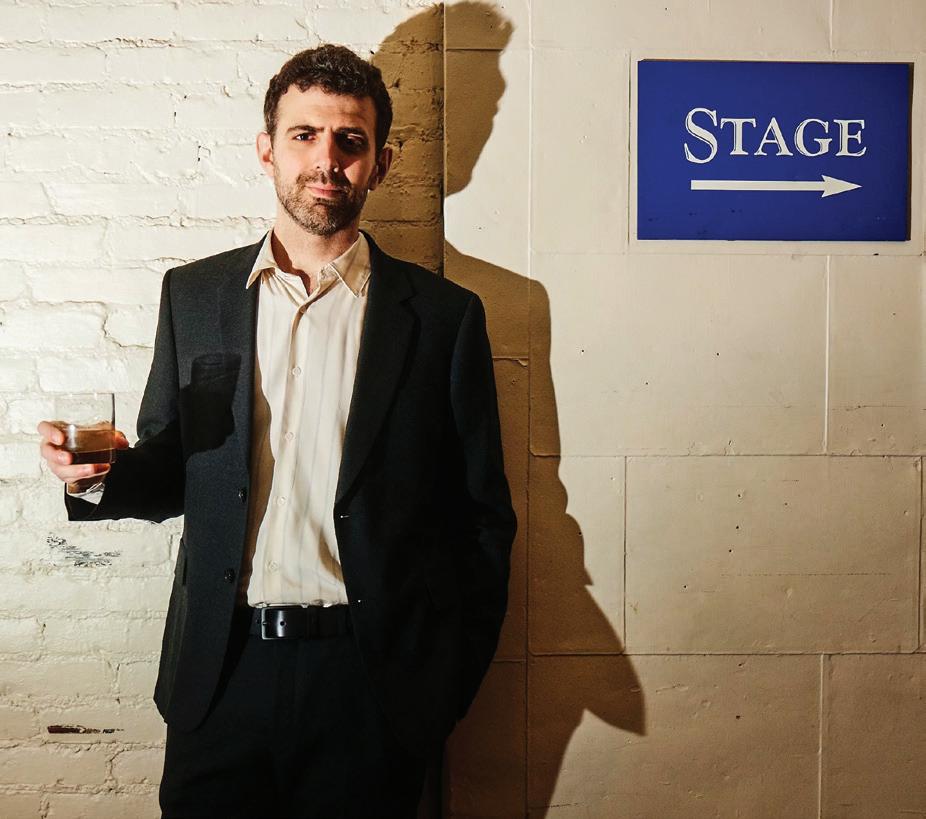
better word, innocence, where you’re like, ‘I can make this funny.’”
When he was younger, Morril had all day to write jokes, a contrast to his increasingly busier schedule that unfolded as he got older, making it challenging to give the same care and attention to material as before.
Daniel Susann Correspondent
Editor’s Note: This article contains reference to substance use.
Christopher Nelson, an NC State Master of Fine Arts graduate, had a rocky path writing and publishing his first book. His story gives light to the power of determination in accomplishing a dream.
Nelson’s “Where You Are From” — a collection of short stories centered around his upbringing in Western North Carolina — is now available for purchase from the publisher, Redhawk Publications.
“Where You Are From” creates vivid imagery in its depiction of common childhood experiences, allowing every reader to relate to the narrative and invoking complex emotions in the short story format. The book is flying off of shelves — Redhawk has already sold out of its original supply. But the path to authorship was not always so clear for Nelson.
“Growing up, I was not expected to go to college,” Nelson said. “I played the trumpet and that’s what got me in. And I just happened to fall into an English class and then I became an English major. … But after college, I decided I wanted to be a writer. I love to write and I had an obsession with things that had happened in childhood.”
In 2008, Nelson earned his MFA in creative writing at NC State. Following the completion of his graduate degree, he worked in Raleigh in a public service role as a paralegal with the NC Department of Corrections, assisting detained individuals with writing legal letters and memoranda.
“I had saved something like 11,000 days in custody,” Nelson said. “And that’s just time people would have served in jail or prison over what they were sentenced to.”
After serving the Raleigh community for half a decade, Nelson headed to Kan-
sas State University where he taught in the English department for seven years. But over time, coupled with challenging family circumstances, his struggles with alcoholism worsened.
“I literally drank myself to death, “ Nelson said. “I ended up four days in a coma, five days intubated and I was revived in a bathtub. It’s nothing that I’m proud of, but that is part of my story and I think that’s good to admit because I’m still alive now.”
During such a challenging period of his life, Nelson found it difficult to make headway with his writing career.
“I wrote several failed novels during that time,” Nelson said. “And by failed novels, I mean novels that just fell apart. I wrote 100,000 words and deleted 110,000 words. But I learned a hell of a lot while I was doing it.”
Despite the roadblocks, Nelson’s ideas for the short story collection persisted and finally made it to the printing press after years spent being tailored and perfected.
Patricia Thompson, acquisitions editor at Redhawk who is tasked with deciding which ideas are worth pursuing, made her opinion of “Where You Are From” clear from the start.
“I always send a manuscript to different people to read, called beta readers,” Thompson said. “A lot of the time, the beta readers will come back and say it stinks. But with Chris’ book, it got all thumbs up. … It’s as if he has been writing for decades. I know he’s got his MFA from State, but man, he was born to write.”
Nelson first got in contact with Redhawk not for his own writing ambitions, but to create an anthology for students at his high school. After the episode in 2020, Nelson returned home to western North Carolina to teach English at the high school level. His devotion to his students led him to help students pursue their own dreams of getting published.
“He successfully navigated putting
The comedian also mentioned how that childlike innocence as a young comic allowed him to experiment with more material. Now that he’s more experienced, more in tune with what jokes work and which ones don’t, his process for developing material has changed. Ultimately, Morril said experience is a benefit, but it can work against you as a comic.
“When you’re older as a comic, you rule a lot out,” Morril said. “You’ll say, ‘Well, that premise is flawed, or this doesn’t work because of this.’ You just become more tuned with what should work and what shouldn’t work and your swing gets shorter.”
Morril said performing in his early years didn’t feel like work. Whether he bombed or killed on any given

together an anthology for high school seniors and juniors,” Thompson said.
“During that process of him putting together this book of writing, he inquired, ‘Hey, I’ve done some writing, how does this work.’ ... He was working for other people and then he asked about himself.”
night, he had fun no matter what while developing his craft and working his way to where he is now.
“For me, it’s kind of like playing basketball at the rec center or something, and you’re like, ‘Oh, man, I just did a lot of cardio,’ but it didn’t feel like cardio, because it was really fun,” Morril said. “That’s kind of how I felt about comedy in those years. It’s just, it was really fun. There were bad nights for sure and I knew they were bad and I was aware that it sucked, but I also knew I was building towards something, or at least I hoped I was.”
Pouring all his energy into stand-up in his early years, Morril said he was forced to purely focus on his comedy without mediums such as TV, podcasts or social media readily available or even popular — all avenues which
Nelson, a selfless man who overcame near death, has not let that incident shape him. Instead, he has brought life to his community and his works.
current rising stars regularly take advantage of.
Morril also talked about how much fun touring is for him. Opting for a tour bus rather than flying from city to city allows for Morril and his crew to have fun while skipping out on the pains of flying.
Whether it’s his comedic style or the tour bus, Morril said working on your craft, finding what you like to do and what works best isn’t just specific to comedy.
“You figure out what you like,” Morril said. “It’s like anything else in life. You just figure out what suits you, and you surround yourself with people who hopefully feel the same way.”
Morril is set to perform in Carolina Theatre in Durham on Feb. 21.

The 97th Academy Awards, commonly called “the Oscars,” is right around the corner on March 2. This major award show recognizes the year’s most influential films throughout several categories, including Best Picture, Best Actor in a Leading Role and Best Actress in a Leading Role.
As with most mainstream media, the Academy Awards are typically 5% about the actual content and impression of the films and 95% about Hollywood politics and other miscellaneous controversies.
Subsequently, this year’s nominations have hurled all of us film nerds into a cascade of excitement, defeat, cynicism and, per usual, an overwhelming sense of blanket confusion. The only prediction I can be certain of is that the list of winners will have us following that same trend.
Starting with Best Actor in a Leading Role, every nominee brought an unforgettable performance to their film. Those that stand out most are Ralph Fiennes in “Conclave,” a twist-filled thriller about selecting the next Pope and Timothée Chalamet in “A Complete Unknown,” a musical biopic about Bob Dylan. Ultimately, I predict victory for Timothée Chalamet.
I wouldn’t call “A Complete Unknown” the film of the year. Its depiction of Dylan’s life felt colorful and insightful at best and like a Wikipedia search at worst.
However, Chalamet’s performance and dedication to his role is a shot of espresso within the film. His transformation into Dylan is undeniably impressive.
Chalamet’s five year commitment to this part shines through his musical performances. His Oscar campaign reminds us how accurately he morphs into Dylan’s speaking, singing and all his quirks.
For Best Actor in a Supporting Role, I’m siding with the critics and choosing Kieran Culkin in “A Real Pain.” The film tells the story of two comically opposite cousins who travel to Poland to learn more about their recently deceased grandmother and how to navigate their grief.
Culkin won Best Supporting Actor this year at the Critics Choice Awards and Best Supporting Actor in a Motion Picture at the Golden Globe Awards. He finds a way to make a complex character blend so smoothly. A role such as this demands intense range. Culkin met the challenge head-on and performed beautifully.
Best Actress in a Leading Role should go to Fernanda Torres hands down. She stars in “I’m Still Here,” a gripping adaptation of a true story about a woman’s search for her husband and her fight for human rights after a military dictatorship upends Brazil in 1971.
The film peels back the layers of motherhood and our dedication to those we love, especially in the face of injustice. Torres delivers a spectacular depiction of her character, Eunice Paiva, leaving me deeply moved by her story.
If you’re wondering about the absence of “Emilia Peréz,” — the most Oscar-nominated film of the year — in my predictions thus far, then it’s time to begin the controversial conversation.
“Emilia Peréz” is about a cartel kingpin who enlists an attorney to help her fake her death to pursue a different path as a trans woman.
Criticism of the film includes that it reinforces harmful stereotypes about trans people and employs a cisgender French director, Jacques Audidard, to oversee a film about Mexico and the trans experience.
The leading actress, Karla Sofía Gascón, has also wildly diminished her chances of winning Best Actress in a Leading Role after her harmful, racist tweets recently resurfaced.
So no, I don’t think the coveted Best Picture award should go to Emilia Peréz, and I think there’s a good chance the controversy will keep it from winning.
Instead, I predict a big win for “Anora,” which took home the prestigious Palme d’Or from the Cannes Film Festival and won Best Picture at the Critics Choice Awards.
“Anora,” directed by Sean Baker, follows the story of Anora “Ani” Mikheeva, played by Mikey Madison, a sex worker who becomes involved in a whirlwind romance with the son of a Russian oligarch. After an impulsive marriage, his powerful family comes after Ani sending henchman Igor, played by Yura Borisov, to force an annulment.
This film is bold, reckless and one-of-a-kind.
We take a full tour of Mikheeva’s mind, from her cynical, survivalist outer shell to the deeper traumas and defense mechanisms underneath her thick skin.
Anora is raw, devastating, hilarious and overwhelmingly entertaining.
For my final predictions, I’ll cover the shooins and the snubbed.
“Challengers,” is a sports film about a dramatic love triangle between three tennis prodigies. Unfortunately, it wasn’t nominated for any Academy Awards.
At a minimum, it deserved a nomination for Best Music (Original Score) and maybe even Best Costume Design for inspiring all of us to buy a tennis dress last summer.
“The Substance” is a shoo-in for Best Makeup and Hairstyling. It’s a feminist horror film following the mutilation and degradation of a woman’s body as she uses a mysterious substance to revitalize her youth and career. The extensive body horror was done authentically with all-too-convincing prosthetics in a way that’s horrifying, grotesque and fantastically done.
Since new controversies and campaigns are constantly dredged up from the bottom of the Academy Award cesspool, predicting winners is pretty impossible.
Truly, I have no idea who will be victorious, but it’s fun to guess.

Sophia Robertson Staff Writer
One of the first things we learn growing up is that we should respect one another. Just look at the so-called Golden Rule, which we all likely learned as early as kindergarten. Yet, years later, as I look around my classes, it seems like many college students have lost their understanding of this very basic concept.
I’m consistently struck by how blatantly students disrespect their professors. Take unnecessary phone and computer usage in class, for instance. In most of my lectures, looking around at any given time, you’ll see a majority of the class’s eyes glued to their computers, working on assignments for other classes or doing something completely irrelevant like online shopping.
What’s the point of scrolling through Instagram or playing sudoku in the middle of a class that your tuition is paying for? At that point, just stay home.
I can’t say that I’m not guilty of it too every once and a while. It’s human to get bored sometimes, especially in a 75-minute class where the professor does nothing more than
read slides, but to ignore the lecturer every class is simply disrespectful.
Another sign of disrespect I see in almost every class is how, as soon as professors begin to wrap up their lectures, students inevitably begin closing their computers, putting away notebooks and even standing up to run out of the room as soon as they can. Not only is it distracting to students trying to pay attention, but it’s also just rude.
How much time are you really going to save by loudly packing your belongings while the professor is still talking, likely discussing important information? Even if the professor is saying something as simple as “have a nice weekend,” have we not learned that it’s common courtesy to listen when someone speaks? These are basic manners, and as college students, I would hope we’ve learned them by now.
On the flip side, if professors expect common courtesy from their students, they should act respectfully too.
I understand that many professors have hundreds of students and what may seem like endless assignments to grade, but there comes a point when the lack of timeliness gets frustrating.
For instance, it’s more than a month into
the semester, and I’ve had at least eight assignments due in one of my 400-level classes. Not a single one has been graded yet. How can I know if I’m doing the assignments correctly if I haven’t gotten any feedback?
Similarly, the lack of communication from professors is another gripe that I’m sure I share with many of my fellow students. I know professors get flooded with emails, but if I’m politely asking a question, it’s the professor’s responsibility to respond. It’s a part of their job, and an essential one, at that.
Unfortunately, over the course of my college experience, far too many of my emails have gotten lost in the void, never to receive a response and leaving me with unanswered questions.
In addition to this lack of consideration, many professors seem to fail to understand that we are adults and should be treated this way.
Last semester — as a junior — my class was sent out on a Sesame Street-themed scavenger hunt in the library. Don’t get me wrong, Elmo, Big Bird and Cookie Monster were fun characters from my childhood, but the show’s target audience is preschoolers.
I think it’s safe to say that, as NC State students, we have all moved past our Sesame Street phases.
Similarly, in one of my classes this semester, I made a diorama out of a shoebox, cardstock and Elmer’s glue. We spent three entire class periods doing this. Now, to a fifth grader, these might seem like enticing classroom activities, but as a 20-year-old student, I can’t say I learned anything important. If anything, it just made me question how serious college really is.
Professors, treating students like children is not going to prepare us for life after college.
As college students, we shouldn’t have to be babied into everything. We had all of elementary, middle and high school for that, and now that many of us are away from home and on our own, it’s time to face the real world.
However, I acknowledge that in order for this to happen, we — as students — must act like adults. Respect truly is a two-way street, and it’s time we reform the professorstudent relationship. Show your professor some respect, and more likely than not, they’ll give it back to you.

February is National Eating Disorders Awareness Month — four weeks dedicated to raising awareness for a mental health condition that roughly 28.8 million Americans will deal with in their lifetime.
But when people visualize someone with an eating disorder, their mind often paints a picture of an affluent, white cisgender woman with a dangerously low body weight. No one is at fault for having this stereotype; the media is one factor to blame for portraying this character innumerable times in films, books and songs. Dated research into eating disorders also reinforces this cliche, with many studies concluding that white, young adult women are at greater risk of developing anorexia nervosa or bulimia nervosa. The issue is that these statistics don’t reflect the full picture, and there is a crucial mediating variable at play.
It’s not that upper-middle-class white women are more likely to develop eating disorders — they are just more likely to receive a diagnosis on account of greater access to treatment resources.
When eating disorders are narrowed to a specific population, the doors to proper care are shut to those who don’t fit the mold. Such
stigmatizations create barriers to treatment for minority groups — a situation tantamount to a death sentence when dealing with mental illnesses as deadly as eating disorders.
Through increased research on eating disorders over the last decades, studies have found that individuals in the LGBTQ+ community are particularly vulnerable. Renee Avis, a clinician at NC State’s Counseling Center who focuses on eating concerns, said that discrimination, judgment and bullying contribute to this susceptibility.
“It increases isolation, depression, anxiety and they also may not feel like they have a community support that they can reach out to,” Avis said.
Individuals who are transgender deal with body dissatisfaction at an elevated level, putting them at an even greater risk.
“Body image is certainly part of that too, like finding out where and how they feel comfortable in their own bodies,” Avis said.
Men are also typically overlooked as targets of eating disorders under the assumption that harmful beauty standards are exclusive to women. The falsehood of this idea is becoming increasingly apparent, with research showing that an estimated 5-10% of adolescent males and 2% of adult males have an eating disorder.
Bodybuilding and gym culture have fabricated an unrealistic standard for the male physique and are catalysts for what clinicians call muscle dysmorphia, a condition characterized by distress over a perceived lack of muscle mass and tone.
Ariane Machín, the assistant director of Mental Health and Performance Psychology at NC State, said both male and female athletes face a lot of pressure to maintain their physical conditions, presenting a greater risk of developing an eating disorder.
“[Their] bodies are tools in a weird way,” Machín said. “There’s a lot of attention devoted towards [their] bodies and changing their bodies.”
It’s inevitable that many men avoid treatment for eating and body image concerns because of deeply-rooted gender norms. Toxic masculinity discourages men from seeking help and deems mental health struggles as a sign of weakness.
“Sometimes males are less likely to feel as though they’re normal for feeling a certain way or thinking a certain way about their body size and shape,” Machín said.
People of color face considerable underrepresentation in the discussion of eating disorders, yet research has shown that no one ethnic group is more susceptible to eating disorders.
Cultural differences can misconstrue interpretations of eating disorder behaviors, such as East Asian ideals of thinness.
“In some communities, it’s like that’s just kind of the behaviors that happen, and it’s not recognized as being out of the norm or something that needs attention,” Avis said.
In cultures that place more emphasis on physical appearance, the likelihood of individuals receiving treatment for eating disorders is significantly lower, reinforcing the stereotype that only white women develop eating
disorders.
To reduce the harmful effects of misrepresentation, Avis said above all, we must normalize the discussion of eating disorders. Through transparency, individuals will feel more comfortable seeking help, even if they don’t fit a stereotype.
“Part of normalizing [eating disorders] is understanding that, for many, it’s a coping strategy that someone has begun using or learned how to use because they’re dealing with other things in their life,” Avis said.
Machín emphasized the importance of vocalizing eating and body-image concerns, even if one does not meet the diagnostic criteria of an eating disorder. Many individuals will struggle with subclinical disordered eating in their lifetime, but addressing those behaviors early on can prevent the development of a clinical eating disorder.
“You don’t have to have an official eating disorder,” Machín said. “Just talk it out a little bit with somebody. It doesn’t have to be a clinician, it’s just to reduce barriers and go from there.” It’s an unfortunate fact that eating disorders can affect anyone regardless of demographic background, but it’s a fact that requires our attention now more than ever. Eating disorders are non-discriminatory when it comes to who they affect; by recognizing this, we can begin destigmatizing them and improving access to proper care.
If you or someone you know is struggling with an eating disorder, resources can be found through the Counseling Center or NEDA.
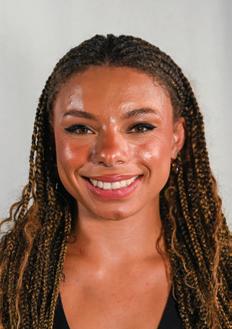
The fact that society weaponizes images to police the representation of Black women in our nation is not one that has recently come to light. Take the jezebel and mammy figures, for example — two stereotypes that have pigeonholed Black women’s identities, especially through cinema, for centuries. The sapphire, the Black woman characterized by her sassy and angry demeanor, is perhaps the most recognizable stereotype today, yet no one interrogates her existence or asks her why, exactly, she’s so angry.
I could sit here and tell you why Black women are more than the stereotypes that have come to define us. I could tell you all the reasons such stereotypes are inaccurate and harmful. Instead, I want to play into it. For as long as I can remember, particularly since the 2024 Election, I’ve been angry. I wake up angry, and I go to sleep angry. I eat every meal angry. I take a shower angry. I
go to class angry. I write angry. And, what makes people the most uncomfortable, I speak angry.
And I mean angry, not angrily. I am angry when I speak because speaking is a form of expression, and I have little to express other than anger.
I’ve said it once and I’ll say it again: Malcolm X was right when he said the Black woman is the most disrespected, unprotected and neglected woman in America. This is true socially and systemically.
For example, the Institute for Women’s Policy Research reports that more than 20% of Black women are raped during their lifetime, which is a higher percentage than women overall, and experience “significantly higher rates of psychological abuse — including humiliation, insults, namecalling and coercive control.”
This statistic is directly tied to the historical sexual exploitation and abuse of Black women in our country. During and after slavery, Black women were subject to lynchings and violence just like Black men, but those dangers were compounded by threats of rape and coercion.
This is not even a snippet of the reality Black women in America face, but it does start to explain how our history and the

experiences of our ancestors are enough to upset us.
However, it is the current state of our sociopolitical institutions that makes our rage runneth over.
Contrary to what the willful ignorance of many conservatives might suggest, racism did not phase out with the Civil Rights Act of 1965. Instead, it hid itself beneath our institutions — like the healthcare system — and wore the disguise of Americana, telling us we can become anything and do anything if we work hard enough.
Its updated mask is even more impressive and effective: an orange man with the hair of a canary. The wave of conservatism and cult of personality that President Donald Trump has fostered has done nothing if not make racism increasingly acceptable in our country.
Trump has concocted a narrative that white people are the real individuals being discriminated against in our country, particularly through attacks on diversity, equity and inclusion efforts. His attempts to give white America the upper hand — that it has always had, for the record — cannot be accomplished without simultaneously disenfranchising people of color, dismissing the discriminatory experiences my people
have fought for centuries to overcome.
Quite frankly, it’s beginning to feel like my ancestors’ work was all for naught in the face of these attacks on civil and human rights, and this is why we’re mad.
Fortunately, there are spaces for angry Black women, and angry people of color in general, to express their discontent and find community with one another. I think of the African American Cultural Center, for example. I think of The Nubian Message as a site of minority expression. I think of the recent women of color retreat hosted by the Women’s Center.
Still, outside of contained spaces, society makes no room for women like me to get mad. I’ve always bitten my tongue and smothered my rage, suffocating it inside of me because I’ve never wanted to embody the sapphire stereotype. I’ve been so afraid of being the kind of Black woman white America thinks I am.
But the stereotype you push on me is more your problem than mine.
For the foreseeable future, I will be mad, and you will hear it. You will feel it. Because as a Black woman, what’s there not to be mad about?

The University Daily Kansan’s Editor-inChief Courtney Lane said in an interview with Kansas City’s KSHB that this is the first year the publication has been able to pay their staff, a luxury many student journalists across the country are not acquainted with. Last week, the University of Kansas’ student government proposed an approximately 80% budget cut for the paper.
The budget cut was rejected after a petition, now nearing 8,000 signatures, urging the Student Senate’s finance council to “Save the Kansan.” Although the budget cut was opposed by their finance council, considering the cut in the first place threatens the voice of the student community.
Currently, the University Daily Kansan receives $3.64 from each student every school year to fund its budget. As reports of the new fee being dropped to $0.75 per student emerged, Lane said the proposed student fee cut would fund “absolutely nothing.”
Just like the UDK, Technician relies on student fees and the allocation of these fees
lies in the hands of the student government.
The work that produced special issues like the “Why Not Both?” Final Four edition and the “Why Not Us?” ACC Championship editions were funded by student fees. The ability to pay our staff for their work is funded by student fees.
Nearly everything we do as editors, writers, photographers, videographers and graphic designers are funded by fees that our fellow students make vital contributions to. And it’s no different for college newspapers across the nation, including the Daily Kansan.
Kansas students have been doing their part, demonstrating at the KU men’s basketball game against Colorado with signs in protest sporting phrases such as “Save UDK.” Even their students see the value that student journalism adds to their campus community.
Money buys time. As the UDK student journalists were afforded the luxury of receiving a paycheck, the quality of their work skyrocketed as resources were afforded to them. Their website received 50% more views not only because fees fueled their pockets, but their dedication.
“So, our quality of journalism is immediately going to tank because our top reporters can’t afford to work here for free,” Lane said in the interview.
If KU’s Student Government can spend $4,500 on pizza a year, they can afford to fund student journalists.
Seeing the effects of the UDK student coverage sets a threatening notion for student newspaper publications across the country. Therefore, we stand in solidarity with the UDK and encourage other student media outlets to voice their concerns and not stay silent regarding this issue.
Technician prides itself on being an
institution that encourages and upholds transparency for the University community. Covering important issues like the PCB contamination of Poe Hall, Student Government and campus tragedies requires watchful eyes. To keep those eyes open, they need to be funded.
Technician, the University Daily Kansan and newspapers across the country are increasingly facing the prospect of dwindling funds. Technician is one of only a few student newspapers left in the country with a weekly physical print issue. Without continued public support, the possibility of losing these centuries-old traditions and stamps of our history grows.
Defunding these student journalists deprives them of access to resources for students while also endangering the value student journalism provides. Student journalism is not dead, but developments like those in Kansas are becoming the norm and not the exception. If we do not acknowledge the perils of our peers as perils of our own, we are sure to face the downfall together.
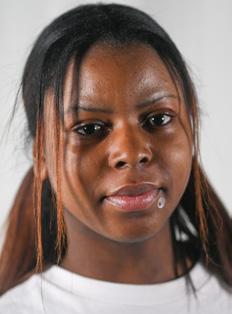
Growing up in a deeply religious household, I knew Bible verses like Genesis 2:24 like the back of my hand: “Therefore a man shall leave his father and his mother and hold fast to his wife, and they shall become one flesh.” I took this phrasing very literally and believed that love meant a surrender of self—thoughts, hobbies and basically all of myself. As I got into my teens and joined the dating realm, I had to step back and reflect: Do I need to give myself up for love?
Surely that doesn’t have to be the case. Love has the power to encourage self-discovery and improvement; however, I noticed that if I’m not careful, it has the power to lead me astray and make me lose sight of the things that define me. For that reason, it’s important to look inward and understand how to build relationships whilst maintaining a sense of self. A tale as old as time, getting into a relationship and changing — we’re supposed to, after all — but it can get to a point. I have mourned the memory of friends who have prioritized spending time with their new partners over the traditions we’ve already had set in place.
I’ve seen personality changes in the greatest of ways. In our formative adult years, the curse of overdependence seems just far too common. At times, it can even feel inevitable. As we embark on the journey of newfound independence and self-discovery, we need identities to cling onto.
Part of my issue as I could understand it was growing up in a broken home. Never having a true sense of belonging anywhere, I would have done anything to savor any bit I could get. Eventually, my own priority of personal growth would begin to fade as I began to simulate my partner. Very quickly “me” turned into “we” before I could even notice.
Granted, the bits of those we love ingrain themselves within us naturally. It’s completely understandable, and there’s no shame in it at all.
If you’re enamored with somebody, you might catch yourself immersing yourself in their interests just to get a feel of them once more. I might take selfies a certain way if the guy I’m into likes it. Other times I may even notice a change in the way I speak. But through it all, I have to ask myself, “Am I still me?”
Becoming too enmeshed in a relationship can prove itself to have dire consequences for our sense of self. We begin to lose ourselves in
the name of love as we give our entire beings. Hobbies are forgotten as maintaining love becomes the center of focus.
One of the major downsides of such dependency is the overwhelming attachment. Fear of abandonment can feel like complete torture at times, and even casual absence — say, if your significant other goes out of town for the weekend — has the ability to leave one feeling empty. And don’t even get me started on the terrors of a breakup. I could recall countless situations in relationships and friendships where I stayed in unhealthy situations for far too long trying to savour certain moments.
Now, that’s not to say that relationships themselves are the problem. Any healthy bond between two people encourages each person to have an identity outside the other. The new perspectives are what enrich the relationship and allow growth in various ways.
Dependency may be easy to fall into, but preventing it does not have to be a difficult process.
Responsible communication and maintaining hobbies work just as well. Even practicing these skills with friends can shift your mindset to prevent an overreliance before it starts.
“We dress a certain way. We walk a certain way. We talk a certain way. We paint a certain way. We make love a certain way, you know?
All of these things we do in a different, unique, specific way that is personally ours,” Barbara Ann Teer said in her 20-minute speech titled “Black Theatre.”
It’s nothing short of the truth. One of the key factors of love is the ability to balance between the self and the other. One has to be able to set crucial boundaries in order to properly maintain oneself in a relationship whilst not also neglecting their partner. This could be as simple as catching up with your own friends just for the sake of it or getting that long-needed alone time and finding out something new about yourself.
Remember: Before you met your partner, there was a certain way about yourself. There was an enigma who did it all in a certain way. That’s why you were seen as enticing to begin with. You don’t have to separate yourself from your partner entirely, but it’s immensely important to have the ability to look inwards and know yourself. That way, you can remain you.
When two people enter into a relationship, they stand beside each other carrying their own name, story and proclivities. The two continue on to build each other up into beings better than they were before and hold their identities together, yet separate.
Noah Teague Staff Writer
For the last several seasons, NC State wrestling has enjoyed the talents of one of the more impressive classes in program history. This year’s senior class features AllAmericans, ACC Champions and strong leaders, both on and off the mat.
“They’re everything,” said head coach Pat Popolizio. “When you get a senior class that sticks here, whether they’re here five years, six years, four years — they pour their heart and soul into this program.”
In its latest match, a 27-13 victory over Stanford, the Wolfpack honored seven wrestlers as a part of its senior day celebration. Competing one final time in Reynolds Coliseum, four of the class’s seven seniors earned starts. After years of training, competing and representing the red-and-white, this group has built a lasting legacy.
“They’re some of the best friends I’ve had in my entire life,” said redshirt sophomore Troy Hohman. “I’ve learned a ton from those guys, every single one of them.”
This year’s senior class is without a doubt talented. The group has led NC State to a team ACC Championship every season since each member arrived on campus while racking up seven individual conference titles. However, this group of seniors pride themselves on the hard work they’ve put in. As a program, NC State takes on a blue-collar, hardworking approach, which this class fully embraced.
“I want my legacy to be just somebody who gave everything that they could and put their effort in and who was just thankful to be here and a part of this program,” said senior Ed Scott.
Scott has certainly left his mark on the program. A mainstay in the starting lineup, he has built a strong name for himself as
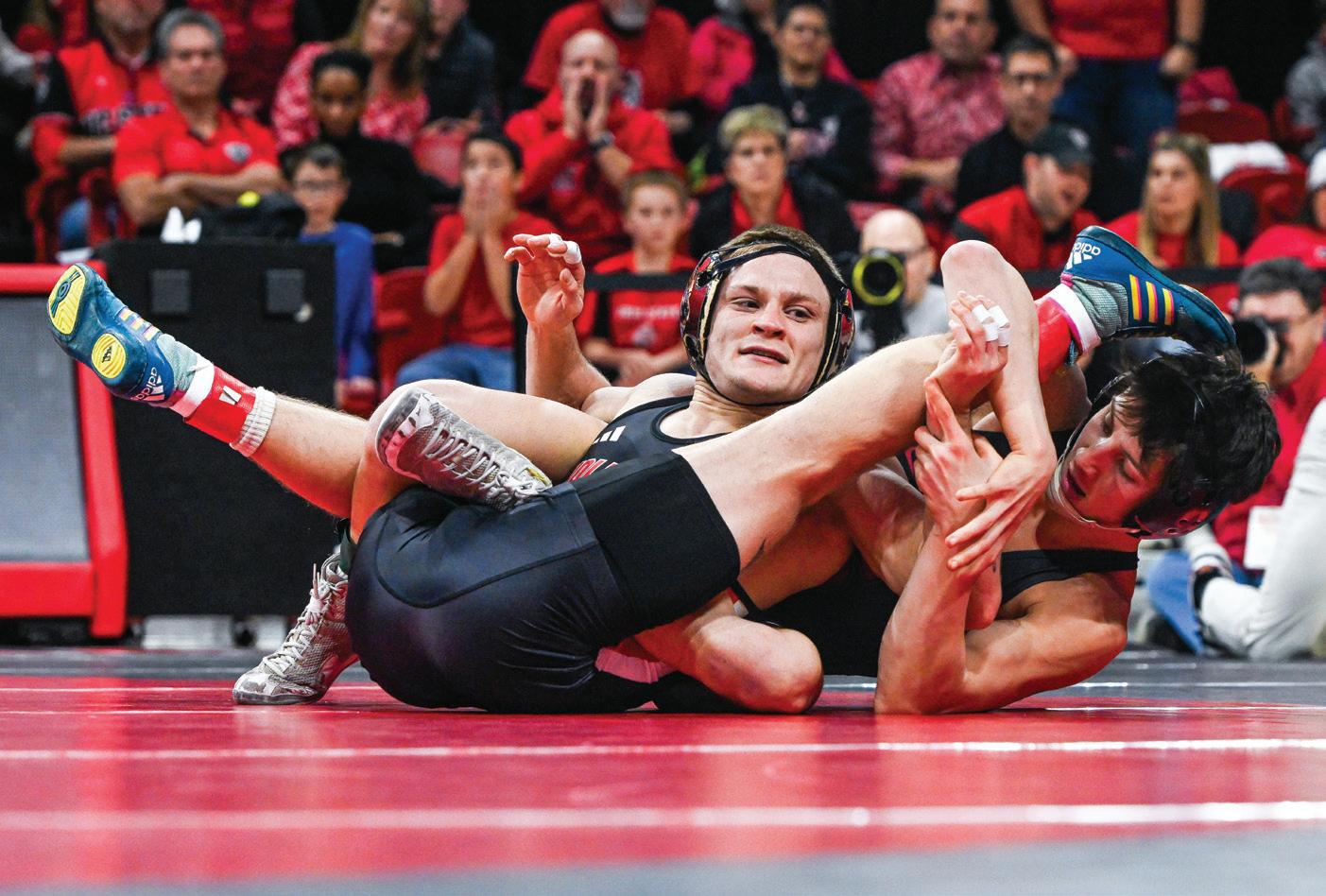
on Friday, Feb. 14, 2025. Orine lost the 133 bout 9-1. NC State beat Stanford 27-13.
the Pack’s starter in the 157-pound class. The Pennsylvania native has earned a pair of ACC Championships, a trio of NCAA Tournament appearances and 2023 AllAmerican honors. Consistently bringing his best, Scott will go down as one of the better wrestlers to come through a talented Wolfpack program.
“This program’s meant so much to me, it’s hard to put it into just a few words,” Scott said. “To be more than just a wrestler, to be a part of this community, to be part of something bigger and grow as a person. … I’m so thankful.”
Redshirt senior Kai Orine will go down as one of the better wrestlers in NC State history. With a pair of ACC Championships and three NCAA Tournament appearances, Orine has already built an incredible legacy on the mat — with one last postseason run
on the horizon. Often competing in the 133-pound class, Orine is known for his speed and ability to quickly shift a match in his favor. Additionally, his signature celebrations have made him a fan favorite in Raleigh.
Redshirt senior Jakob Camacho is the longest-tenured wrestler on NC State’s roster, joining the team in 2018. During his collegiate career, Camacho has primarily competed in the 125-pound class. While Camacho hasn’t wrestled since suffering an injury early in the season, he’s earned an impressive collection of achievements. With a trio of ACC Championships, plus being named the 2020 ACC Championship’s Most Outstanding Wrestler, Camacho has torched opponents for years in the ACC. While Orine and Scott held the spotlight this season, Camacho’s impact on the pro-
gram is equally as impressive.
Redshirt senior Christian Knop has emerged as NC State’s starter in the 197-pound class this season. Despite not seeing much action during his early years with the program, Knop stuck with NC State and was rewarded with a breakout season. With eight wins this season and a No. 30 ranking nationally, Knopp is set to compete in his first ACC Tournament. While it took time for him to break out, Knopp became a success story.
In his fourth season with the Pack, redshirt junior Derek Fields is enjoying a career season after breaking out last year. Fresh off an NCAA Tournament appearance, Fields is now wrestling at his best in the 165-pound class with a chance to make a second straight NCAA Tournament. After improving each season, Fields is a prime example of how hard work pays off at NC State. Rounding out the class are redshirt junior Luke Ahrberg and redshirt sophomore Josh Johnson, who both participated in the senior night festivities before the pack’s match with Stanford. Each has seen limited action with the red-and-white but have left their contributions. Ahrberg played a key role during the 2022-23 season, posting a 13-6 record, including 1-0 in ACC competition. Meanwhile, Johnson has led by example for the Pack, earning multiple ACC Academic Honor Roll honors and winning the PNC Achievers Award.
With so many key contributors, this year’s senior class shouldn’t be forgotten. The things they’ve accomplished on the mat are as impressive as almost any group of seniors in the country — and the group still has one last postseason to add to their legacies. From ACC Championships to strong leadership, this year’s senior class has set a high bar for the rest of the team.
Colby Trotter Sports Editor
In his last two press conferences, NC State men’s basketball head coach Kevin Keatts has brought up what his team did last year, unprompted. You know, when it won the ACC Championship for the first time in 37 years and made the Final Four for the first time in 41 years.
It’s as if Keatts thinks his job is on the line and is using what his team did last year as
the reason why he should stick around even though the Wolfpack is in danger of missing the ACC Tournament as the defending champions.
After the Pack’s biggest loss of the season against Louisville, Keatts directed his commentary toward the fans, which there was a lack thereof at Lenovo Center.
“If you think as a fan if you’re disappointed, how do you think the guys who work extremely hard every day feel?” Keatts said.
“We’re busting our butt every day. And let’s not forget this. Let’s not forget one thing. Now, we did hang a banner, two of them. That hadn’t happened in 37 and 40 years. So let’s have some respect for that part of it.”
He then went on to explain why fans should keep showing up to games even though at the time, the Wolfpack was one game away from setting the longest losing streak in program history.
“If there was a fan that had a business,
and they wasn’t doing well, I [would] still support their business,” Keatts said. “And when you in it, be in it — don’t be halfway.” Then after NC State won its second game of the calendar year over Boston College, toward the end of the press conference, Keatts was asked how nice it was to have a six-point, six-assist and no turnover performance from graduate guard Michael O’Connell who had been struggling during the losing streak.
Connor VanDerMark Assistant Sports Editor
With men’s basketball and football experiencing disappointing seasons, No. 13 NC State women’s basketball has become Wolfpack fans’ main source of hope in the 2024-25 season.
NC State began the season ranked No. 9, but the Wolfpack staggered in games against then-No. 1 South Carolina, thenNo. 7 LSU and a tough TCU team, all of which are currently ranked in the top 10, causing it to drop out of the AP Poll. Nonetheless, the team kept pushing forward. Rallying behind an undefeated record at Reynolds Coliseum, NC State won 16 of its next 17 games, including three against top-20 opponents, and peaked at No. 10 in the AP Poll.
But the Wolfpack just fell to then-No. 12 UNC-Chapel Hill in a heart-pounding 6665 loss. At first glance, it doesn’t look like a big deal — it’s just one bucket, after all. NC State hasn’t won in its rival’s arena since 2022 and defeating a top-12 team on the road is a tough task. Senior guard Aziaha James simply had an uncharacteristically rough night from the field but will be back better than ever.
But if you look closer, NC State’s loss against UNC exposes a bigger flaw in the red-and-white’s game. The Wolfpack hasn’t played a complete game. Instead of pointing at James’ poor performance or the Tar Heels’ home-court advantage, look no further than the second quarter, where NC State scored just four points in 10 minutes. Senior guard Saniya Rivers scored every point and shot just 22% in the quarter. On
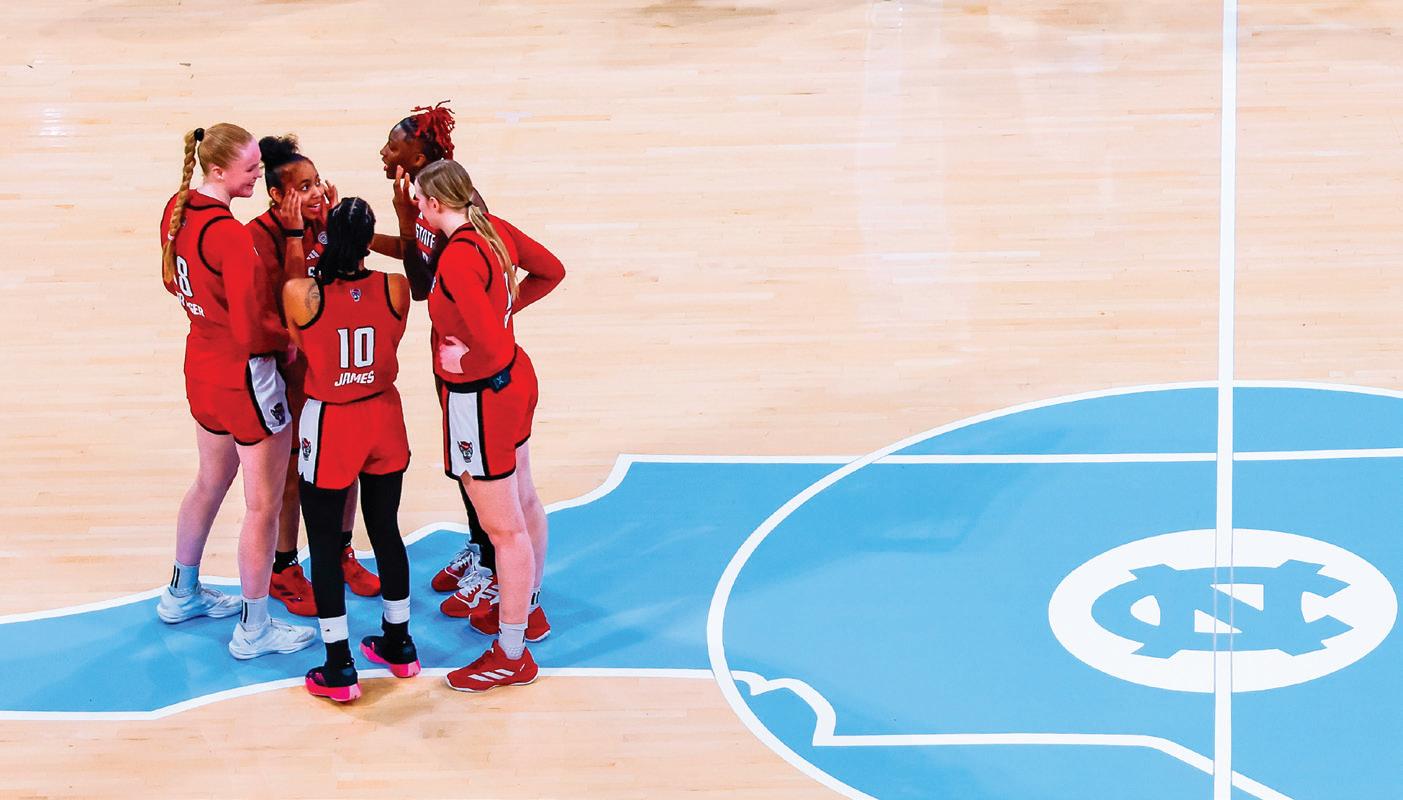
The lineup discusses strategy at the start of the fourth quarter during the game in Carmichael Arena on Sunday, Feb. 16th, 2025. NC State lost to the University of North Carolina at Chapel Hill 66-65.
the other hand, UNC took full advantage and scored 18 points in those 10 minutes, heavily swinging the game in its favor.
Besides that second quarter, the Wolfpack outscored the Tar Heels in the other three quarters by a combined margin of 13 points. It outscored its rival in their own gym by double digits through three quarters, but one bad quarter took away the opportunity at a Quad 1 win.
This isn’t just a one-time occurrence either. In NC State’s hard-fought home win against then-No. 10 Duke, it opened with a statement first quarter, scoring 24 points against the second-best defense in the ACC. Making over 61% of its shots, the Wolfpack looked like a team that was ready to make a deep run in the NCAA Tournament.
But much like its match against UNC, the Wolfpack squandered it all in the second quarter. Duke shot out on a 17-0 run to take
full control of the match. NC State scored just eight points in the quarter while the Blue Devils scored 26, entering halftime with a commanding 11-point lead.
The red-and-white was forced to play from behind for the entirety of the second half and needed all of James’ career-high 36 points to win. NC State outscored Duke by 24 points in the other three quarters combined, yet the abysmal second quarter forced the game to be way closer than it should’ve been.
In its road loss against then-No. 24 California, the Wolfpack took control with a six-point lead at the end of the first quarter but went into halftime down six after the Golden Bears outscored the Pack by 12 in the second quarter.
This issue isn’t even confined to this season. In last year’s Final Four matchup against eventual National Champions South
Carolina, NC State was down by just one point at halftime. It had one of the nation’s top women’s basketball schools on the ropes. But the Wolfpack was outscored 29-6 in the third quarter, instantly putting the game out of reach, ending NC State’s season and keeping it out of the National Championship game.
Time and time again, NC State looks like one of the best teams in the nation for 30 minutes but looks like a high school junior varsity team for the other 10.
Identifying the source of the issue is much harder. Unlike some other NC State coaches, head coach Wes Moore is one of the best in the nation, proving so over and over throughout his 12 years with the Wolfpack. It isn’t a roster issue either. NC State boasts a Wooden Award late midseason top 20 player, a projected WNBA first-round pick and multiple former five-star recruits. Whether it’s overconfidence, playing down to its opponent’s level or some other mystery reason, NC State needs to quickly figure out its issue before the postseason comes around. With just four regularseason games remaining, time is running out for NC State to solve its problems. The Wolfpack has won multiple games even with its low-scoring quarter issues, but that won’t work against top contenders like UCLA, UConn or USC.
With consecutive matchups at No. 20 Georgia Tech and home against No. 1 Notre Dame, the time is now for NC State to play its best for a full 40 minutes. No 10-minute slip-ups or four-point quarters. To replicate its postseason magic, the Wolfpack needs to follow through with complete games.
At first, Keatts answered the question, talking about how great it was to have O’Connell play at that level and the impact he has, but then he brought up what the team accomplished last season unprompted again in an attempt to defend O’Connell who has received criticism for his play.
“Don’t take it for granted because a lot of folks took it for granted,” Keatts said. “They had to wait 40 years for it to happen, and we did something special. So that doesn’t mean that this team gets grace, but Michael man, guy hit a great shot against Virginia and,
well, you would think he’s the worst player that’s ever played here. If it was up to him, he should have just retired right after the Virginia game.”
Then he brought up what NC State football head coach Dave Doeren said at his opening press conference in 2012, and it came off as a subtle diss to his coaching counterpart.
“I remember Dave at the end of his press conference saying when he was hired, all he had to do was beat Carolina,” Keatts said.
“How about winning championships? That’s
what we’ve done.”
Keatts also took an uncharacteristic jab at the media when talking about the criticism he and his team have received since the start of the season.
“I get a little offended when it comes to my players,” Keatts said. “I don’t get offended by me. I don’t even — I hate to tell you guys or anybody — I don’t even read your shit.”
The usually upbeat and eternally optimistic Keatts has broken character in these last two press conferences. He’s felt the need to go out of his way to bring up what his team
did last season in what seems like an attempt to convince fans and his bosses why he should stick around.
Less than a year after winning the ACC Championship, making the Final Four and securing an automatic extension, the idea of Keatts having to plead for job security would have been unfathomable. Yet, here we are.
Lee Staff Writer
NC State athletics took the national stage in 2023-24, becoming just the third school to reach a bowl in football, the men’s and women’s basketball Final Four and the College World Series in one school year.
With that level of achievement, one question looms: How close is the Wolfpack to a national championship? Let’s break down each program’s odds of winning a title in the next five years.
Following three straight national titles from 2021-24, NC State women’s cross country finished eighth at the 2024 NCAA Championships in November. Six of the seven championship participants will return next season, including juniors Grace Hartman and Hannah Gapes who finished fifth and eighth, respectively.
A young, inexperienced group with unrefined strategies finished fifth at the ACC Championships in 2024, a humbling result after seven straight conference titles. With additional experience — and the addition of No. 1 recruit Sadie Engelhardt — NC State has a strong case for a return to the crown.
The Wolfpack men haven’t won an ACC crown since 2011, making the women the best bet for a national champion in Raleigh.
In an expanded 12-team playoff, upsets in the postseason are bound to increase, making it anyone’s game. The problem is getting to the playoffs.
Since the AP ranking began in 1936, NC State football has had two top 12 finishes: 1974 and 2002. In the CFP era, the Wolfpack has been as high as No. 14.
NC State’s future is contingent on the development of true freshman quarterback CJ Bailey. Bailey was a bright spot on a porous 2024 squad, so another jump as a sophomore would make Raleigh a prime destination for a cast of talent in 2026 and beyond.
2025 marked a historic season for NC State men’s soccer — the team reached its first quarterfinal appearance since 1992 in head coach Marc Hubbard’s inaugural season.
While many key pieces have moved on, the focal point of the season was Hubbard’s
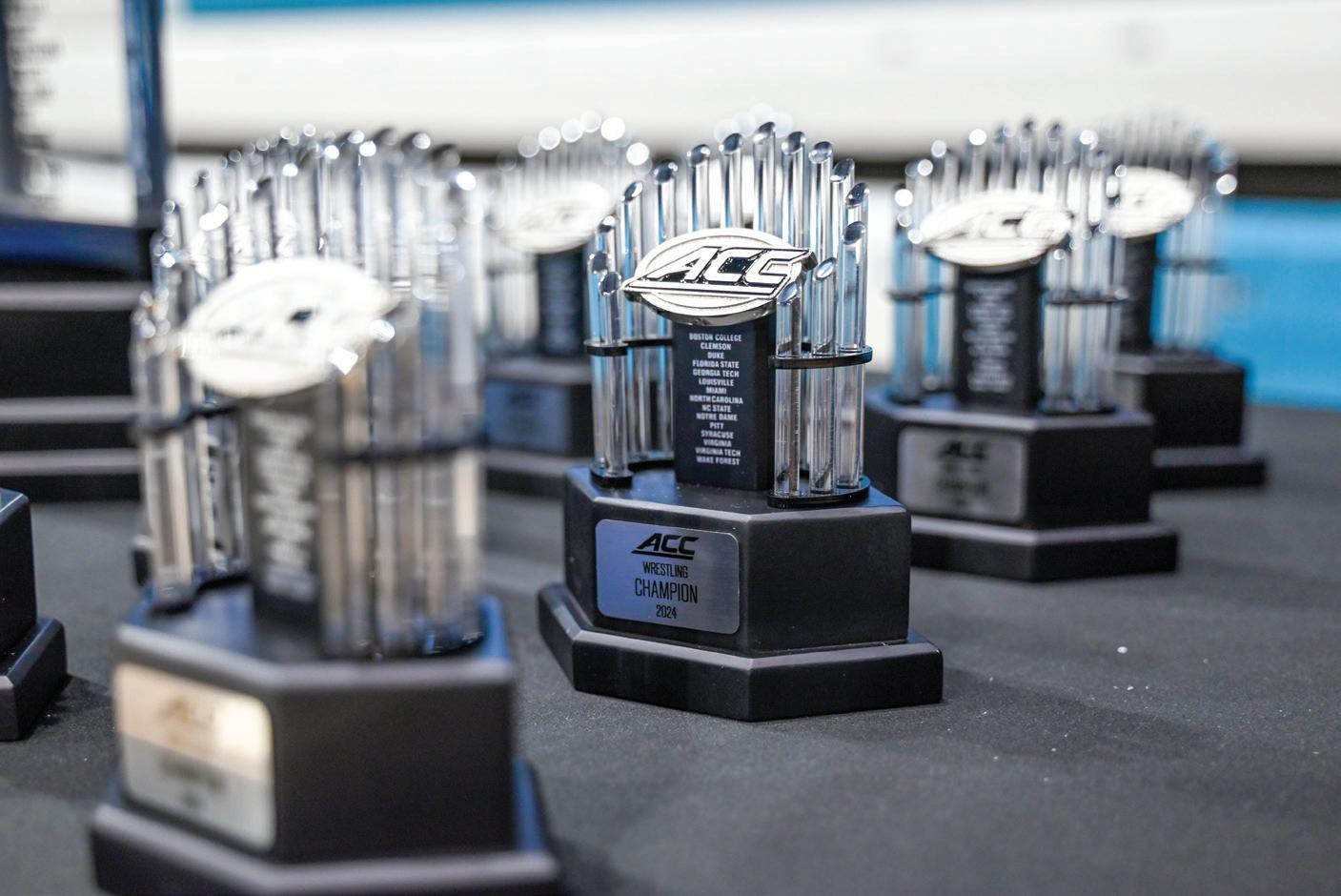
assembly and utilization of 11 transfers. Replicating that transfer portal success could elevate NC State into college soccer’s elite.
The Wolfpack competes in a stacked conference that featured five quarterfinal teams in the fall tournament. With the University’s full confidence behind him, Hubbard is building a contender in Raleigh.
Amid a coaching change, NC State women’s soccer faces an uphill battle moving forward.
A 4-10-4 regular season led to the dismissal of head coach Tim Santoro after posting a 28-69-16 ACC record. After three seasons at East Carolina, Gary Higgins was named head coach in December.
The Wolfpack made six straight tournaments from 2016-2022, giving Higgins a stronger foundation than many other vacancies. However, with little momentum and key departures, Higgins’ squad would need a meteoric rise to enter the national conversation.
After the most successful season of his tenure, head coach Luka Slabe stepped away from NC State in December.
NC State volleyball reached the NCAA Tournament for just the fourth time in program history, falling to Florida in the first round. Of the eight players who logged at least 90 sets played, two are returning, four
are graduating and two entered the transfer portal.
New head coach Megan Wargo-Kearney has a strong pedigree, appearing in the NCAA Tournament six times with Truman State, and can sustain the program’s momentum. However, she must retool the roster to remain competitive.
Men’s basketball: 200-1
This is tricky because it’s rare for a reigning Final Four team to have a coach on the hot seat or miss its conference tournament, but that’s the reality for the Wolfpack.
Even in a relatively weak conference, NC State has struggled offensively, ranking 17th in ACC scoring and 16th in rebounding. A coaching change would put the program even further behind the curve in the short term, but keeping head coach Kevin Keatts could prolong the team’s struggles. The team needs a primary scorer to counter the devastating 2-3 zone, which teams have used to effectively neutralize its offense.
Women’s basketball: 15-1
The 2023-2024 NC State women’s basketball team set a new bar for the program, qualifying for the Final Four for the second time.
In 2024-2025, the team is hovering around the same 3-seed it held last spring. With a guard-heavy lineup, the key to contention this season is interior production from true freshman Tilda Trygger.
Most starters are upperclassmen soon to
leave Raleigh, but an elite freshman and incoming freshman class bodes well for the future.
NC State gymnastics is poised for another run in the NCAA Tournament one year after getting bounced in the first round.
Ranked No. 18, the Wolfpack sits outside tournament status but has eight more meets to bolster its resume. Despite what a 4-5 record suggests, the women average 196.025 points per meet — chasing just California and Stanford in the ACC.
The Wolfpack won the 2023 ACC Championship in its first year after departing the EAGL conference, where it spent 29 years. Continued conference contention and a steady rise for the program are on the horizon.
Just one year after the NC State swimming and diving men’s and women’s teams both finished in the top 10 nationally, the bar has only heightened.
The Wolfpack men and women rank No. 5 and 8, respectively, as they compete at the ACC Championships this week. The men seek their fourth consecutive title while the women aim to capture their first since 2019. While the women have recently emerged as national contenders, men’s swimming and diving may be NC State’s most decorated program. An NCAA crown has eluded them — but that day may be fast approaching.
Head coach Pat Popolizio has transformed NC State into a perennial wrestling contender, winning six straight ACC titles since 2018 and positioning the Pack as favorites for a seventh.
The Wolfpack has a ranked wrestler in nine of 10 weight classes, including two in the Top 5. Popolizio’s squad is No. 7 nationally — the highest-ranked team in the ACC — with its only loss to No. 2 Oklahoma State.
No. 1 Penn State has won 11 of 13 NCAA Championships since 2011, including a dominant 100-point victory last spring. The 2020 championships — canceled because of COVID-19 — may have been the Pack’s best shot at the champs. However, with several ranked redshirt freshmen in the pipeline,
NC State remains poised to challenge the Nittany Lions for years.
NC State men’s golf has experienced highs and lows in 2024, finishing as high as first and as low as 12th in tournament play.
Junior Joey Lenane leads the team with a 1-under-par scoring average, one of three players posting a subpar average. At the Williams Cup in October, the Pack finished fifth, trailing only No. 8 UNC-Chapel Hill, No. 4 Arizona State, No. 3 Auburn and No. 14 Florida.
Historically, the program has limited national success, with just one conference title and one regional championship. An ACC school hasn’t won the national championship since Clemson in 2003.
Wolfpack women’s golf hasn’t finished in the top 3 all season and is currently ranked No. 45 nationally.
With only 24 teams eligible for the NCAA Tournament, NC State must climb at least 21 spots to qualify.
Freshman Marie Eline Madsen leads the team in scoring, offering a glimpse at the future. Regardless, a single athlete can’t carry a team to a national crown in golf, even the talented Denmark native.
Longtime head coach Elliott Avent has led the Wolfpack to 21 NCAA Tournaments and three trips to Omaha and is showing no signs of slowing down.
Many speculated that NC State’s all-time winningest coach would retire after falling to Florida in the College World Series. Instead, he and his preseason No. 13 Wolfpack are back for another shot at the title.
With this five-year window likely marking the end of Avent’s tenure in Raleigh, he’ll be hungry to go out on top.
Softball:
NC State softball hasn’t posted a winning record against conference opponents since 2015, the program’s first and only ranked finish.
In head coach Lindsay Leftwich’s first season, the Wolfpack finished 30-23. The
former LSU assistant inherited an 18-35 program that hasn’t made an NCAA Tournament appearance since qualifying for the Super Regional in 2015.
With the Ensley sisters leading NC State, there’s optimism that the rebuild may be nearing its conclusion — though national contention remains a ways off.
Men’s tennis: 50-1
Ranked No. 19 in the nation, NC State men’s tennis sits in prime position for an NCAA Tournament berth.
Three of the Pack’s four losses have been to top six opponents, including inter-conference foes No. 2 Wake Forest and No. 5 Virginia. Senior Braden Shick boasts a 13-6 record and the No. 16 singles ranking.
The Wolfpack has consistently succeeded under head coach Kyle Spencer, qualifying for the tournament each year during his tenure. Can he guide his team over the championship hurdle?
Women’s tennis: 20-1


is aiming for a rerun.
This year’s No. 19 Wolfpack squad boasts the No. 2 doubles duo nationally, both of whom are sophomores. Against current Top-25 opponents, the Pack is 5-3, including two losses by just one point.
The record against quality opponents suggests the 2025 team may be a year too early for title contention, but such a young, talented group could immediately become an elite contender by 2026.
Track and field: 5000-1
Florida State’s mid-2000s teams represent the ACC’s only three track and field national championships. ACC schools, including NC State, typically don’t have the means or desire to invest heavily across all phases of its teams — choosing to specialize in one or a couple.
If the Wolfpack won a track and field title, it would be the result of a philosophical shift in collegiate athletics.
Just two years removed from a national title appearance, NC State women’s tennis
